AMD AM1 Kabini Part 2: Athlon 5350/5150 and Sempron 3850/2650 Tested
by Ian Cutress on May 29, 2014 2:00 PM ESTCPU Synthetic Benchmarks
Content Creation - Cinebench
Based on MAXON’s CINEMA 4D animation software, Cinebench is used to determine the CPU and graphics performance via OpenGL. The software has gone through many iterations over the years, and here we use versions 10, 11.5 and 15 to compare single-threaded and multi-threaded CPU performance. As the generations increase, the software becomes more multithread aware and scales better, however for consistency with older results we keep the version 10 results in our database.
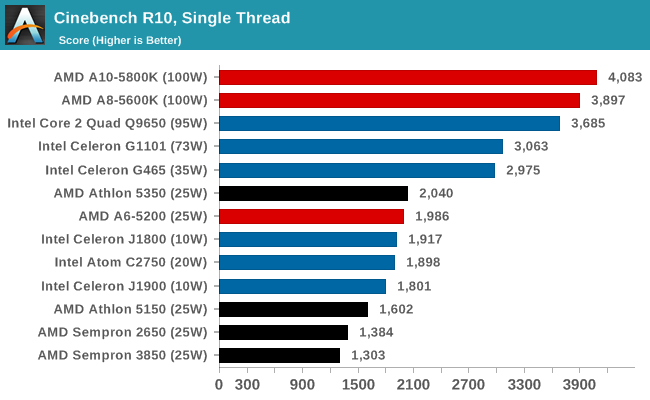
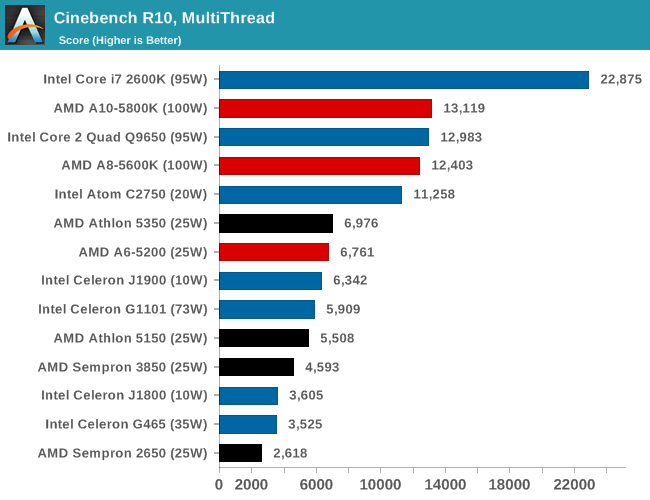
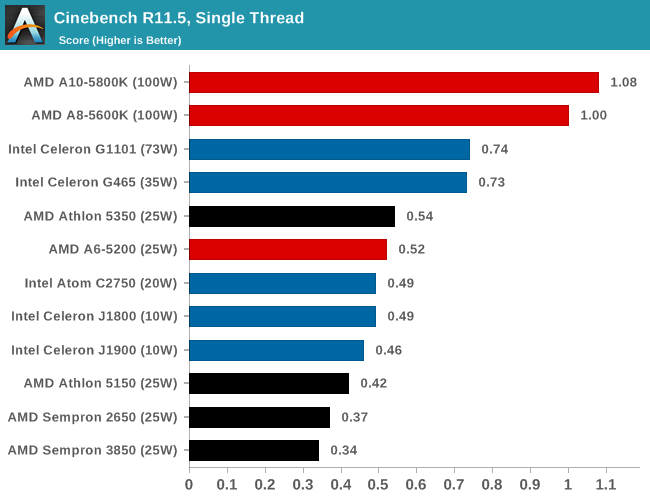
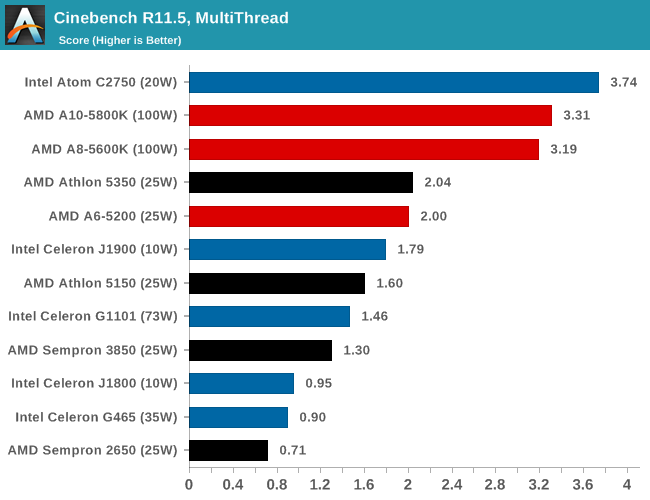
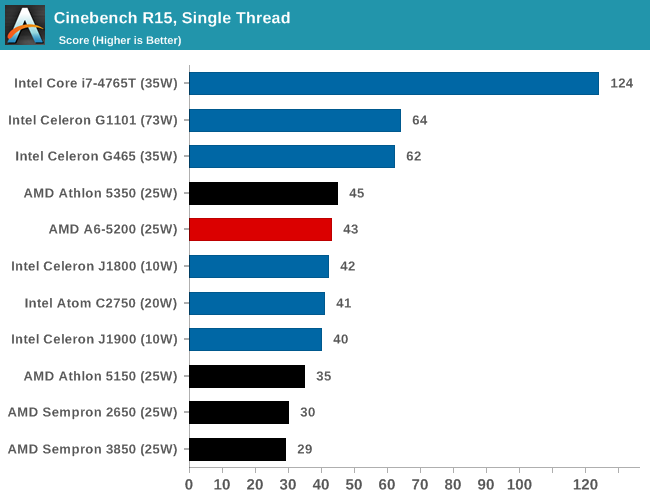
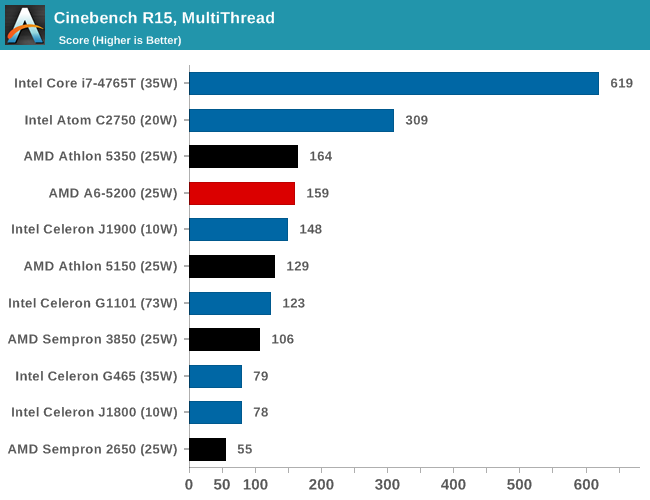
Synthetic – 7-Zip 9.2: link
As an open source compression tool, 7-Zip is a popular tool for making sets of files easier to handle and transfer. The software offers up its own benchmark, to which we report the result.
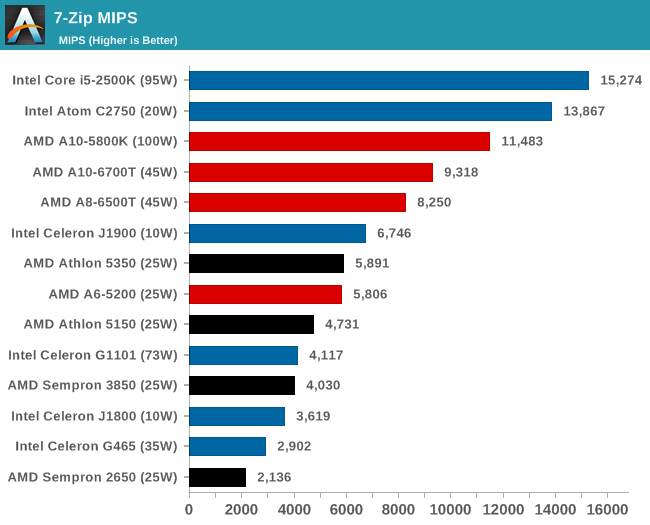
Rendering – PovRay 3.7: link
The Persistence of Vision RayTracer, or PovRay, is a freeware package for as the name suggests, ray tracing. It is a pure renderer, rather than modeling software, but the latest beta version contains a handy benchmark for stressing all processing threads on a platform. We have been using this test in motherboard reviews to test memory stability at various CPU speeds to good effect – if it passes the test, the IMC in the CPU is stable for a given CPU speed. As a CPU test, it runs for approximately 2-3 minutes on high end platforms.

Console Emulation –Dolphin Benchmark: link
At the start of 2014 I was emailed with a link to a new emulation benchmark based on the Dolphin Emulator. The issue with emulators tends to be two-fold: game licensing and raw CPU power required for the emulation. As a result, many emulators are often bound by single thread CPU performance, and general reports tended to suggest that Haswell provided a significant post to emulator performance. This benchmark runs a Wii program that raytraces a complex 3D scene inside the Dolphin Wii emulator. Performance on this benchmark is a good proxy of the speed of Dolphin CPU emulation, which is an intensive single core task using most aspects of a CPU. Results are given in minutes, where the Wii itself scores 17.53; meaning that anything scoring better than this is faster than an actual Wii for processing Wii code, albeit emulated.











87 Comments
View All Comments
serpretetsky - Thursday, May 29, 2014 - link
I'm not sure I understand the power chart on page 2. Is the title correct? Power difference? So the numbers we are seeing are power differentials between idle and load and not absolute values?casteve - Friday, May 30, 2014 - link
Ian uses a 1250W PSU in this setup. So, absolute value is pretty meaningless when your system idles down in the low efficiency (and high slope) part of the power supply's curve. The delta power part at least provides an idea of what's going on.jospoortvliet - Sunday, June 1, 2014 - link
Yet idle power is quite important - cpu's are idle most of the time...coburn_c - Thursday, May 29, 2014 - link
There's your future of AMD. Scaling up Jaguar will fix their code/module problems and improve their perf/watt. There is certainly no future in their big cores.rootheday3 - Thursday, May 29, 2014 - link
Ivy Bridge gt1 was 6 eus; bay trail is 4 eus.jvp - Friday, May 30, 2014 - link
What is missing in this review is that some Intel processors have stripped down instruction sets. Like the Celeron J1900 with which the Athlon 5350 is compared as direct competitor.I'm also missing tests about performance when using virtual machines, and hardware accelerated encryption. These are area's that are becoming more and more important for systems.
R3MF - Friday, May 30, 2014 - link
this is lovely, thanks, but how long before we get beema in socket AM1?R3MF - Friday, May 30, 2014 - link
in addition, do i understand correctly that:kabini is 28nm TSMC, whereas
beema is 28nm GF
plonk420 - Friday, May 30, 2014 - link
thank you thank you THANK YOU for including i3-4300 series on the dGPU page! i've been wondering how they stand up to gaming on a budget as i've helped do 2 builds in the last couple months for the first time in years!Icehawk - Friday, May 30, 2014 - link
I'm with prior posters - testing these low end machines with current games is all well and good but also unlikely to happen in real life. Can these handle games I'd be more likely to want to play on a low power device like TF2 or Diablo 3? NO CLUE.